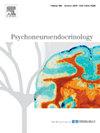Risk factors for precocious puberty: A systematic review and meta‑analysis
IF 3.4
2区 医学
Q2 ENDOCRINOLOGY & METABOLISM
引用次数: 0
Abstract
Purpose
Precocious puberty (PP) typically refers to the initiation of puberty prior to the age of eight in females and before the age of nine in males. The objective of this systematic review and meta-analysis is to pinpoint the risk factors linked to PP, thereby facilitating early diagnosis and timely intervention for individuals at high risk.
Methods
A thorough search was carried out in the Cochrane Library, PubMed, and Embase databases up to November 10, 2024. The eligible studies comprised participants diagnosed with PP in the exposure group and participants without PP in the control group. The odds ratio (OR) and weighted mean difference (WMD) with 95 % confidence interval (CI) were computed using a random-effects model.
Results
Out of 653 initially identified papers, 13 studies involving 15 cohorts were ultimately included. The mate-analysis findings indicated significant associations between several factors and the incidence of PP: BMI, maternal menarche age, and duration of breastfeeding. These three factors are significantly associated with the presence of pp: estrogen (E2) levels, follicle-stimulating hormone (FSH) levels, luteinizing hormone (LH) levels.
Conclusion
The occurrence of PP is strongly associated with several factors including BMI, maternal menarche age, and breastfeeding duration. The presence of PP is associated with three factors including E2, LH, FSH.
性早熟的风险因素:系统回顾和荟萃分析
性早熟(PP)通常是指女性在8岁之前和男性在9岁之前开始青春期。本系统综述和荟萃分析的目的是查明与PP相关的危险因素,从而促进对高危个体的早期诊断和及时干预。方法在Cochrane Library、PubMed和Embase数据库中检索至2024年11月10日。符合条件的研究包括暴露组诊断为PP的参与者和对照组未诊断为PP的参与者。采用随机效应模型计算比值比(OR)和加权平均差(WMD),置信区间为95% %。结果在最初确定的653篇论文中,最终纳入了13项研究,涉及15个队列。配对分析结果表明,BMI、产妇初潮年龄和母乳喂养时间等因素与PP发病率之间存在显著关联。这三个因素与pp的存在显著相关:雌激素(E2)水平、促卵泡激素(FSH)水平、促黄体生成素(LH)水平。结论妊高征的发生与BMI、产妇初潮年龄、母乳喂养时间等因素密切相关。PP的存在与E2、LH、FSH三个因素有关。
本文章由计算机程序翻译,如有差异,请以英文原文为准。
求助全文
约1分钟内获得全文
求助全文
来源期刊

Psychoneuroendocrinology
医学-精神病学
CiteScore
7.40
自引率
8.10%
发文量
268
审稿时长
66 days
期刊介绍:
Psychoneuroendocrinology publishes papers dealing with the interrelated disciplines of psychology, neurobiology, endocrinology, immunology, neurology, and psychiatry, with an emphasis on multidisciplinary studies aiming at integrating these disciplines in terms of either basic research or clinical implications. One of the main goals is to understand how a variety of psychobiological factors interact in the expression of the stress response as it relates to the development and/or maintenance of neuropsychiatric illnesses.
 求助内容:
求助内容: 应助结果提醒方式:
应助结果提醒方式:


